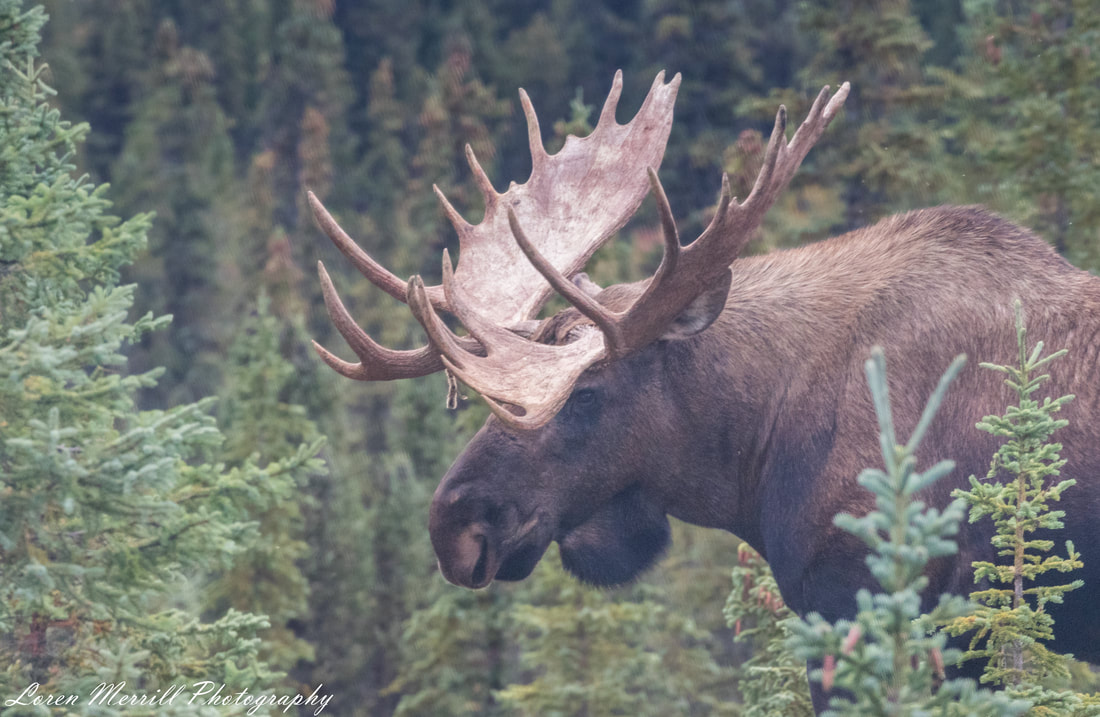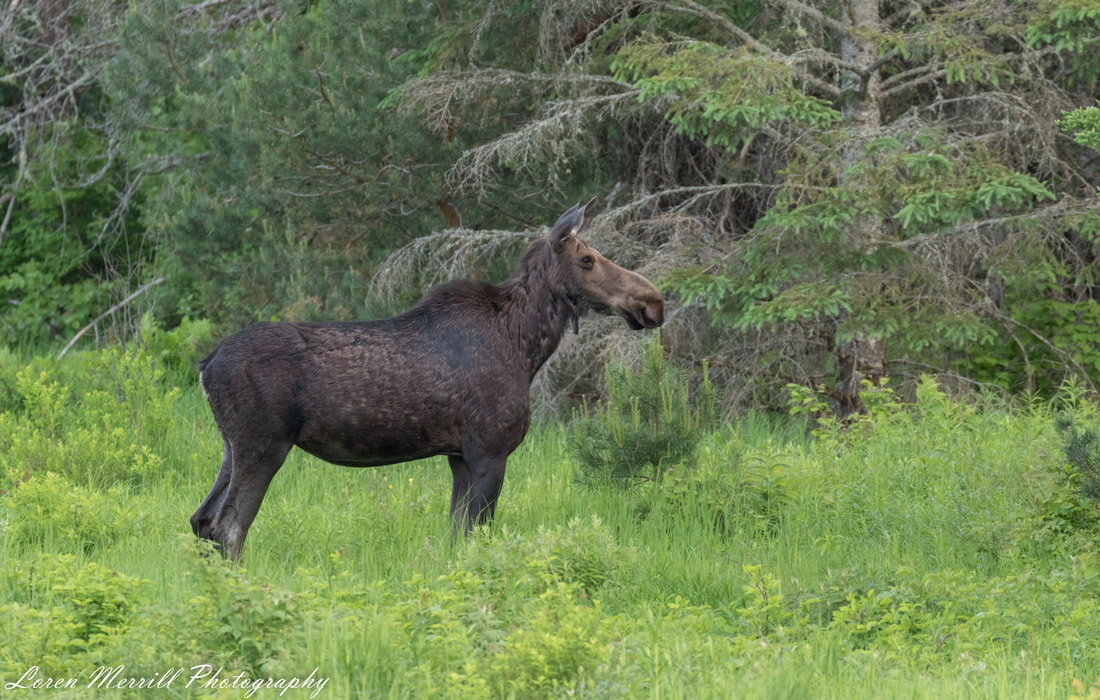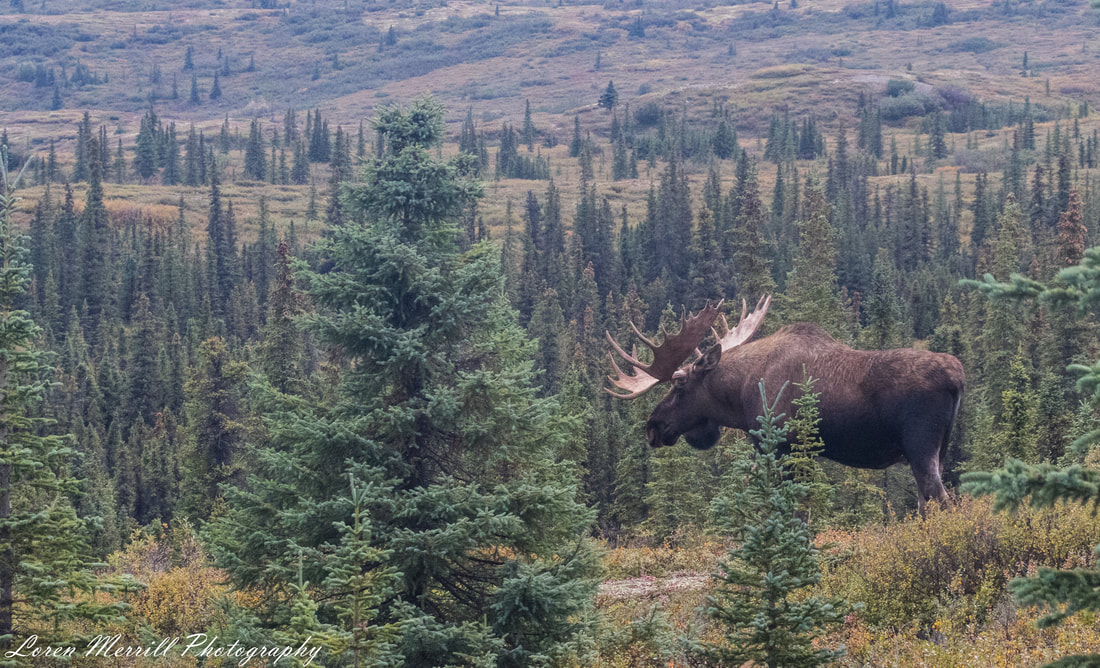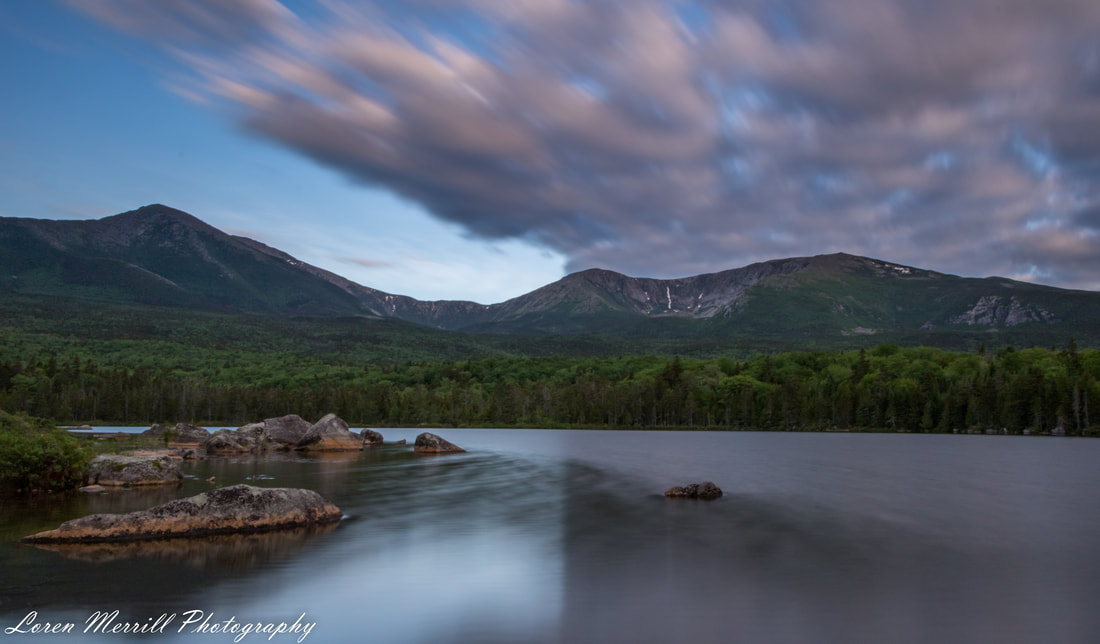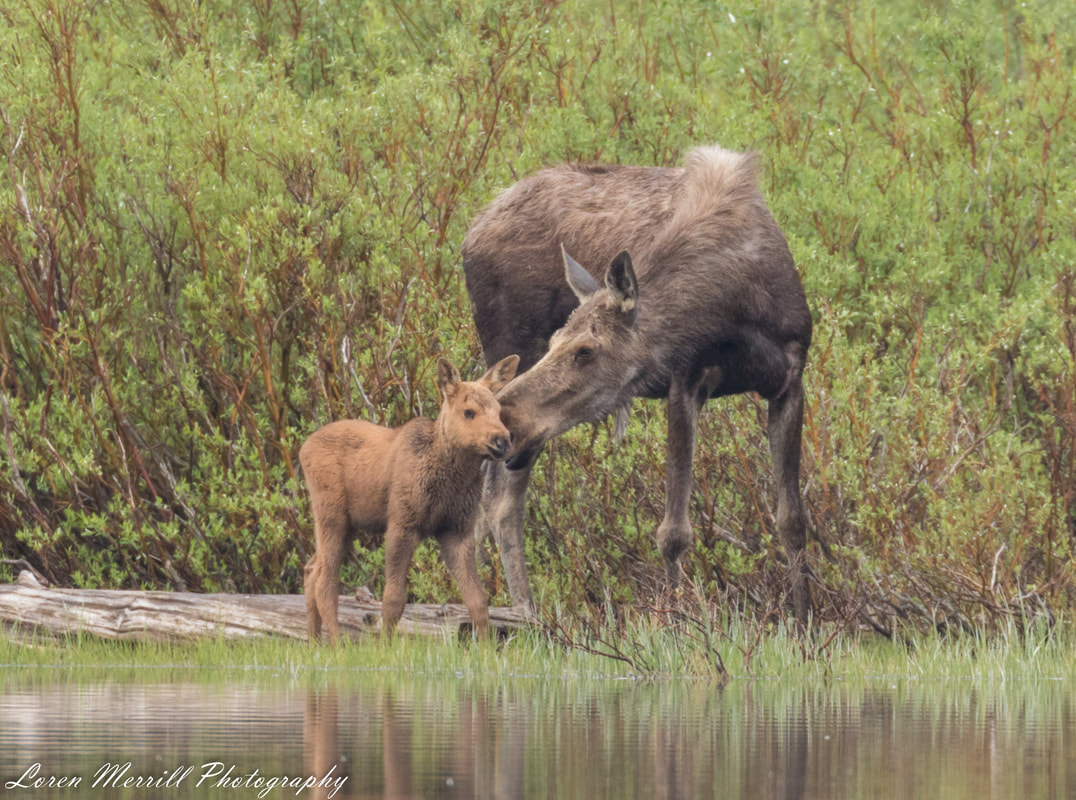|
When I was nine, I had an encounter with a moose that bordered on the fantastical. The setting for this story is Baxter State Park, located in the heart of the Maine woods, and my dad had taken me there for my first real camping trip. It was a warm, mid-August day, and we were hiking up Mt. Katahdin, which at that point was the terminus of the Appalachian Trail. We had been on the trail for maybe four hours when we rounded a corner, and there she stood; an enormous adult female moose. She turned her massive head with her elongated snout and radio-antenna ears, and gave us an appraising look. She was perhaps 30-40 feet away, but she occupied my entire field of view. I could hear people approaching from behind us on the trail, so I darted back to alert them to the moose’s presence. I then returned to my spot and watched as the moose began slowly moving towards us. I then did something that was fairly foolhardy and which could have gotten me into heap of trouble; I began slowly walking towards her. I’m not entirely sure what motivated me to approach the quarter-ton wild animal, but at the time it seemed like the logical thing to do. I was convinced that once I got to within 20 feet of her, she would amble off the path like the other moose we’d seen in the preceding days, and disappear into the understory. But that’s not how events unfolded. As the distance between us shrank, I began to realize that she wasn’t exhibiting any signs of fear or agitation, and she also wasn’t showing any signs of altering her path. When we were no more than eight feet apart, I stopped and let her close the final gap. She plodded up to me, stopped, and peered down. My mind raced—“What do I do?” I wondered to myself. “Feed her!” my brain answered. I reached down, grabbed a fistful of grass and wildflowers, and held them up to her. She leaned down to sniff the offering and I waited without breathing. In my mind, she was going to reach out, delicately grasp the bouquet from my hand, savor the wonderful selection of hand-picked greens, and we would be forever friends; a boy and his moose. She would live in our yard and I could ride her to school. It seemed inevitable. But as with so many nine-year-old’s dreams, it was not to be. After giving my would-be gift a few good sniffs, she turned away, wandered a few steps off the trail and grabbed a mouthful of pine needles. “Pine needles!?!” I thought, feeling rejected. Even at that age I knew pine needles were considerably less nutritious than what I had in my hand (although I didn’t know that moose can happily subsist on evergreen needles). I tossed my unwanted offering onto the ground and after a few final moments watching my moose-friend, we continued with our hike. For most people the experience would likely have been noteworthy, maybe even inspiring. But for me, it was transcendent. We lived in Boston at the time, right in the transition zone between the urban and suburban environments. Up to that point, my experiences with large wildlife had consisted of visits to zoos and aquaria, and watching nature shows on PBS. Of all the North American fauna, the one I developed the greatest fascination for was the moose. For some reason, moose became the embodiment of wilderness to me. And the fact that I could possibly see one in parts of New England made it all the more thrilling. When my dad announced that he and I would go on a camping trip to Baxter State Park (a well-known moose mecca), I was beside myself with excitement. For me, this was akin to traveling to the middle of the South American rainforest or the plains of Africa. What bears mentioning at this point is that I was a bit obsessed with animals. As a youngster, I eschewed traditional television shows like Sesame Street, or Mr. Roger’s Neighborhood in favor of animal-themed programming like Wild America and Nature. Most of the time I got my wildlife fix by flipping over rocks in our yard and grabbing whatever poor beetles or red-backed salamanders were residing underneath. But a trip to Baxter meant access to a whole new world, and I went with one goal: to see moose. The trip was, by every possible measure, a huge success. We saw almost a dozen moose, and in addition to the moose encounter on the Mt. Katahdin trail, I witnessed an interaction between a pair of moose calves and a white-tailed deer that also sounds made up. On our final day in the park, we did a short hike, and then decided to visit Sandy Stream Pond in the hopes of seeing a few more moose. The pond did not disappoint. A solitary moose was foraging on aquatic grass at one end of the pond, and towards the other end a mother moose grazed in the shallows while her twin calves played along the shoreline a little ways away. A huge white-tailed deer buck was also present, foraging at the pond’s edge. I was perched on a large hunk of granite that afforded me a clear view of the entire pond. The twins were the most active participants at the pond, and while the adults were all focused on the important business of eating, the young calves were focused on carousing. They chased each other in circles, kicking up their legs as though they were bucking broncos, and splashing through the shallow water with wild abandon. I don’t remember how long they danced like this, but at some point, their attention was drawn away from each other and towards the giant white-tailed deer that was still foraging about 100 feet away. The twins must have had the same thought, because they began running side-by-side towards the deer. To my surprise (and probably that of the moose calves), the deer looked up and started running towards the twins. Even though the twins were a few months old and were as large as a normal white-tail, this buck dwarfed them. He ran with his head up, holding his massive spread of antlers high. I sat glued to my rock, watching as this high-stakes game of deer-moose chicken unfolded across from me. The two parties closed on each other and at the last instant, the buck leapt over the two calves, and vanished into the woods. Yes, you read that right. He jumped clear over the moose calves. The twins meanwhile crashed into one another and collapsed in the water in a tangled mass of limbs and ears. Momma moose must have been watching, because at that point she swam over to her babies to collect them, and presumably to scold them for fraternizing with dirty* deer. They soon departed from the pond, and so did we.
(*See next week’s post for information about the parasites deer carry that can be deadly for moose.) Looking back on these experiences, I can see that they were instrumental in laying the foundation for my lifelong fascination with wildlife. All of my subsequent adventures and wildlife encounters are tied to these early memories; they are the bar against which my experiences are measured. A handful of experiences have met that bar since then, but what is striking to me is that in the past few years I’ve had a few experiences that were strongly evocative of those early encounters. Stay tuned for Part II next Tuesday to read about those encounters, and for more information about moose natural history, and the challenges moose face today.
4 Comments
Margaret
8/29/2019 05:25:11 am
Awesome! :-)
Reply
Loren Merrill
9/7/2019 03:07:57 pm
Thanks very much!!
Reply
Anne Cyr
8/29/2019 05:27:31 am
Hi Loren
Reply
Loren Merrill
9/7/2019 03:07:24 pm
Thanks so much Anne! We've got you on the list!
Reply
Leave a Reply. |
About the author:Loren grew up in the wilds of Boston, Massachusetts, and honed his natural history skills in the urban backyard. He attended Cornell University for his undergraduate degree in Natural Resources, and received his PhD in Ecology from the University of California, Santa Barbara. He has traveled extensively, and in the past few years has developed an affliction for wildlife photography. Archives:
|
